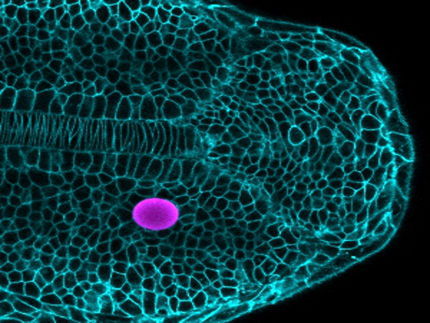Geron's telomerase and human embryonic stem cell (hESC) technologies to produce immortalized cells for research
Advertisement
Geron Corporation announced the publication of studies that demonstrate the synergy of Geron's telomerase and human embryonic stem cell (hESC) technologies to produce immortalized cells for research, biologics production, and therapeutic applications.
In a report published in the November issue of the journal Stem Cells, scientists from Geron and the Roslin Institute demonstrated (i) that fibroblast-like cells could be differentiated from hESCs, (ii) that those cells could be immortalized with telomerase, and (iii) that the immortalized cells could then be used to produce conditioned medium to support feeder-free growth of undifferentiated hESCs.
hESCs are unique, unspecialized stem cells that can be grown in large quantities and differentiated into a wide variety of cell types potentially useful for treating a range of human diseases. Undifferentiated hESCs have unlimited proliferative capacity because they express the enzyme telomerase. In the course of differentiation, telomerase is down-regulated and the resulting differentiated cells have a finite lifespan. In these studies, the researchers derived fibroblast-like cells, termed HEF1 cells, from hESCs. The telomerase-negative HEF1 cells underwent senescence after approximately ten population doublings. Upon insertion of the gene encoding the catalytic subunit of telomerase in the HEF1 cells, the cells stably expressed high levels of telomerase activity, showed continuous growth in culture, and did not senesce. Moreover, the telomerase-immortalized HEF1 cells still responded to osteogenic inductive factors and were capable of differentiating into fully mature osteoblasts (bone-producing cells). These results show that cells derived from hESCs can be immortalized by insertion of the telomerase gene without affecting their ability to further differentiate into functional effector cells.
Geron has previously reported its development of an improved method for culturing hESCs in medium conditioned by mouse embryonic fibroblasts (MEFs), instead of on feeder layers of MEFs, thereby eliminating the need for direct contact with mouse cells. In the new studies, the telomerase-immortalized HEF1 cells were used to produce conditioned medium, which was shown to be capable of supporting the growth of undifferentiated hESCs, including the same hESC line from which the HEF1 cell was derived. The culture system was thus both human- rather than mouse-based, and genotypically homogeneous.
"This development further reduces the risk of exposure of hESCs to potential mouse xenogeneic pathogens," stated Jane S. Lebkowski, Geron's senior vice president of regenerative medicine. "Moreover, it allows the production of hESCs in a totally isogenic system where the conditioned medium is produced by derivatives of the hESCs themselves."
"Geron has recently been awarded a U.S. patent on feeder-free cultures for the propagation of human embryonic stem cells," stated Thomas B. Okarma, Geron's president and chief executive officer. "This development is one of a series of key technologies developed at Geron to scalably and economically produce cells safe for therapeutic use. These results are significant also because they demonstrate that hESC-derived cells can be immortalized with telomerase, thereby broadening the possible applications of hESC-derived cell types."






















































